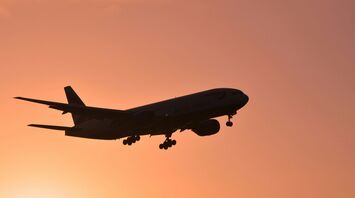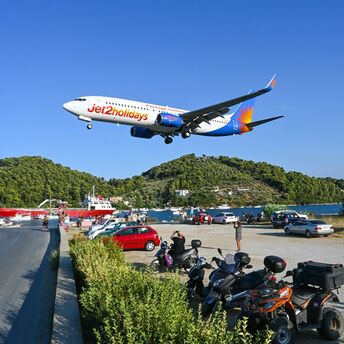September 2024: A Look at the Busiest U.S. Domestic Air Routes

As the travel industry continues to rebound and evolve, the dynamics of air travel within the United States offer intriguing insights into passenger preferences and market trends. September 2024 has seen a notable surge in domestic travel, with several routes standing out as the busiest in the nation. These heavily trafficked corridors reflect not only the demand for connectivity between major urban centers but also the shifting patterns in business and leisure travel across the country.
The Top Contenders: High-Demand Routes
Leading the pack in September 2024 is the ever-popular route between Los Angeles International Airport (LAX) and San Francisco International Airport (SFO). According to the latest data, this route remains a powerhouse in domestic travel, driven by both business and leisure passengers. The report highlights that the LAX-SFO corridor consistently ranks at the top due to the sheer volume of travelers seeking quick, frequent connections between California’s two largest cities.
Another key route making headlines is the flight between New York’s LaGuardia Airport (LGA) and Chicago O'Hare International Airport (ORD). This route is pivotal for business travelers, linking two of the nation’s most important economic hubs. With multiple daily flights offered by several major carriers, the LGA-ORD route remains a critical artery in the U.S. domestic air travel network.
In the southern region, the route between Dallas/Fort Worth International Airport (DFW) and Hartsfield-Jackson Atlanta International Airport (ATL) continues to see robust traffic. As two of the busiest airports in the world, DFW and ATL serve as major hubs for connecting flights, making this route essential for both regional and national connectivity.
Factors Driving Route Popularity
The popularity of these routes can be attributed to a variety of factors. For business travelers, the need for efficient, frequent flights between major cities is paramount, and airlines have responded by offering a high frequency of departures throughout the day. The convenience of multiple flight options allows business professionals to optimize their schedules, making these routes indispensable.
Leisure travel also plays a significant role, particularly on routes like LAX-SFO, where proximity to key tourist attractions and the appeal of California’s diverse landscapes attract a steady stream of vacationers. Similarly, the DFW-ATL route benefits from the draw of Atlanta’s cultural landmarks and Dallas’s reputation as a gateway to the American Southwest.
Additionally, the ongoing recovery of the travel industry post-pandemic has contributed to increased passenger numbers on these routes. As confidence in air travel continues to grow, more travelers are opting for domestic flights, whether for business meetings, family visits, or vacations, driving up the demand for these high-traffic corridors.
Airlines Capitalizing on High-Demand Routes
Airlines have strategically positioned themselves to capitalize on these busy routes by offering enhanced services and competitive pricing. Major carriers like American Airlines, Delta Air Lines, and United Airlines dominate these routes, leveraging their extensive networks and frequent flyer programs to attract and retain customers. These airlines are continually adjusting their schedules to meet demand, ensuring that they maintain a strong presence on the most sought-after routes.
Moreover, low-cost carriers are also making inroads into these markets, offering budget-friendly options that appeal to a broad range of travelers. By providing competitive fares on popular routes, these carriers are able to tap into the high demand and capture a share of the passenger traffic, further intensifying the competition.
Implications for Travelers
For travelers, the concentration of traffic on these routes offers both opportunities and challenges. On the one hand, the high frequency of flights provides flexibility and convenience, allowing passengers to choose from multiple departure times. On the other hand, the popularity of these routes can lead to congestion, both in the air and on the ground, particularly during peak travel times.
Passengers on these routes are advised to book flights well in advance, especially during busy periods, to secure the best fares and preferred flight times. Additionally, travelers should be prepared for potential delays, as high traffic volumes can sometimes strain airport and air traffic control operations.
Looking Ahead: Trends and Predictions
As we move forward, it is likely that these key domestic routes will continue to dominate the U.S. air travel landscape. However, shifts in work patterns, such as the increasing prevalence of remote work, may influence future travel demand. Routes that serve major business centers might see fluctuating passenger numbers as companies adjust their travel policies in response to changing work environments.
Furthermore, the continued expansion of regional airports and the introduction of new, direct routes by airlines could redistribute some of the traffic currently concentrated on these major corridors. As the industry adapts to evolving traveler preferences, we may see new routes emerge as contenders for the busiest in the nation.



















